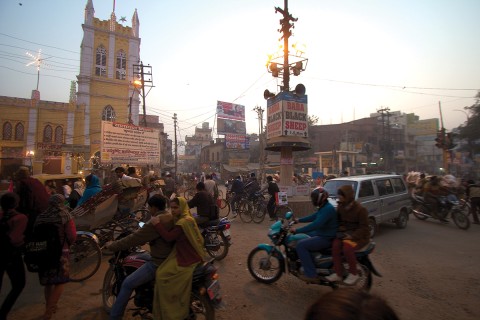The roots of India’s united churches
How the Church of South India and Church of North India were formed—and how they fare today.

In the mid-20th century, ecumenism was a lively topic of debate within Protestant churches. As so often in Christian history, some of the boldest and most innovative experiments occurred on the mission frontier, in what we today call the Global South. We are approaching the 75th anniversary of a critical development in that story.
When the British ruled India, they established their familiar denominations, which built churches along familiar lines. Those structures symbolized the imperial associations of the faith, in an overwhelmingly non-Christian society that was anxious to end British domination. As national independence approached in 1947, Christians faced challenging questions about their place in the emerging order.
Read our latest issue or browse back issues.
In the southern half of India, a broad range of churches agreed to an act of unification that would have been breathtaking, even unthinkable, in Europe or North America. The new Church of South India incorporated four main traditions: Anglican, Methodist, Presbyterian, and Congregational. The CSI is thus a full member of both the Anglican Communion and the World Methodist Council. Its motto comes from Jesus’ words: “That they all may be one.”
Over the following decades, the CSI experiment was followed in other parts of the subcontinent, most significantly by the Church of North India, created in 1970. CNI went beyond its southern counterpart, including Baptists and Disciples of Christ. The year 1970 also brought a new united Church of Pakistan. Across the subcontinent, those very British-looking urban church buildings, with their incongruous Masterpiece Theater quality, are now occupied by wholly Indian or Pakistani clergy and congregations.
When it was founded, the CSI was widely cited as a genuinely exciting model of the Protestant future worldwide. Looking back, how have it and its counterparts fared?
In terms of raw numbers, the story is mixed. The churches have certainly survived the turmoil of independence. Today, the CSI reports around 4 million members, with 2 million more in the CNI. By the standards of US and British churches, these numbers are impressive.
But in the context of a very populous India, the picture is less encouraging. Together, the CNI and CSI represent less than 0.5 percent of the total population. Their position within the larger Indian Christian world is quite hard to assess. Bitter official hostility to non-Hindu traditions means that accurate statistics for Christian numbers are hard to come by. The Pew Research Center suggests a total of 34 million Christians in India, or 2.4 percent of the population, while the World Christian Database suggests the real number is twice that. Many researchers suggest a figure in the low 40s of millions. Everyone agrees there is a substantial number of crypto-Christians, but the size of that clandestine population is by definition impossible to determine.
Let’s take 40–45 million as a reasonable estimate of the total Christian population. Around half of those believers are Roman Catholic, 4 million are Lutherans, and 5 million adhere to one of the ancient churches of the Syriac tradition, claiming descent from St. Thomas. With their combined total of 6 million members, then, the two united churches, the CSI and CNI, are a solid part of the ecclesiastical landscape but nothing like a dominant presence.
Nor, critically, have these two churches played any major role in the impressive expansion of Christian numbers in recent decades, which has occurred in the face of fearsome Hindu opposition. Even otherwise moderate Hindu leaders who happily accept coexistence with Christians are deeply suspicious of efforts at mission or proselytizing, and the united churches have respected these concerns as an essential way of preserving their respectable mainstream status. Other Christian groups—Pentecostal, Baptist, and independent—have been much more daring and expansive, and they have won many converts at the humbler levels of society and on the geographical margins. When we hear about Hindu extremists targeting churches or believers, these are the denominations involved. To adapt a famous saying, perhaps well-behaved churches don’t make history, and they don’t make many converts.
Sadly, the two united churches have repeatedly made headlines in other, less heroic ways. Over the past two decades, Indian media coverage of both the CSI and CNI has often focused on deeply embarrassing scandals, almost always of a financial nature. Most such affairs involve the substantial land holdings of the respective churches, and the criminal cases have involved fraudulent land sales and forgery. Other scandals have exposed improper diversion of funds to personal use, including money donated by Western churches for disaster relief. In 2018, one land sale case led to the arrest of a former moderator of the CSI.
But such scandals are only one part of the history of the two churches. For many positive reasons, these ecumenical churches deserve to be better known around the Christian world.
A version of this article appears in the print edition under the title “India’s united churches.”






